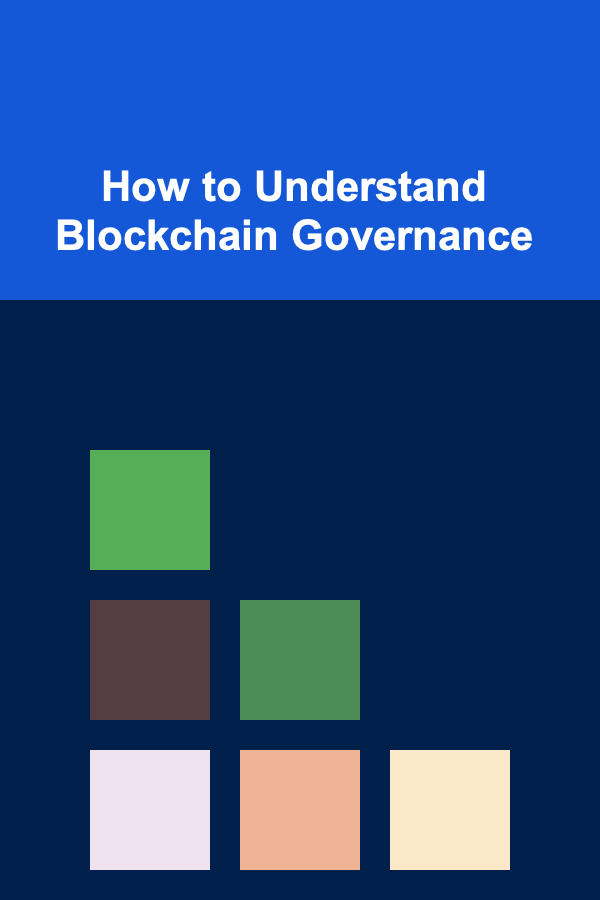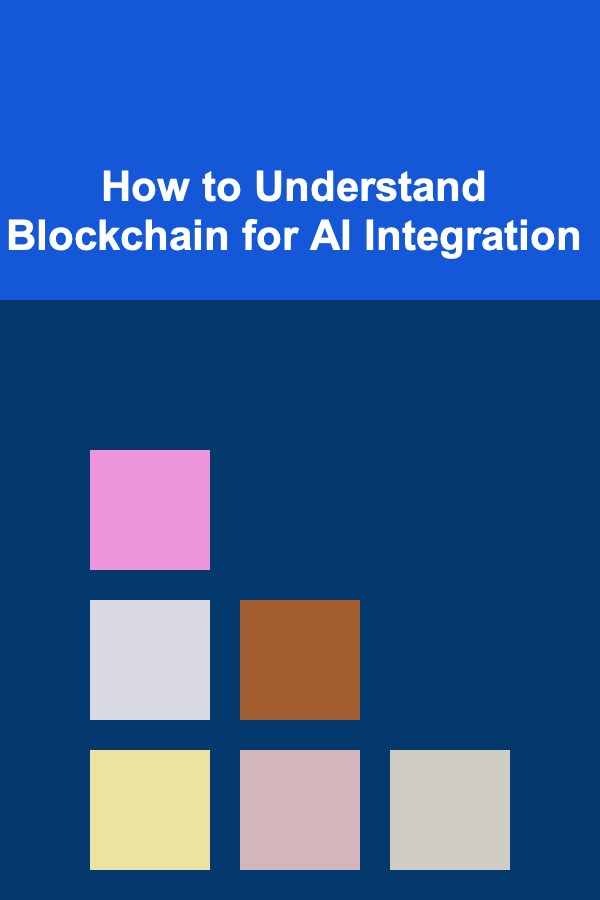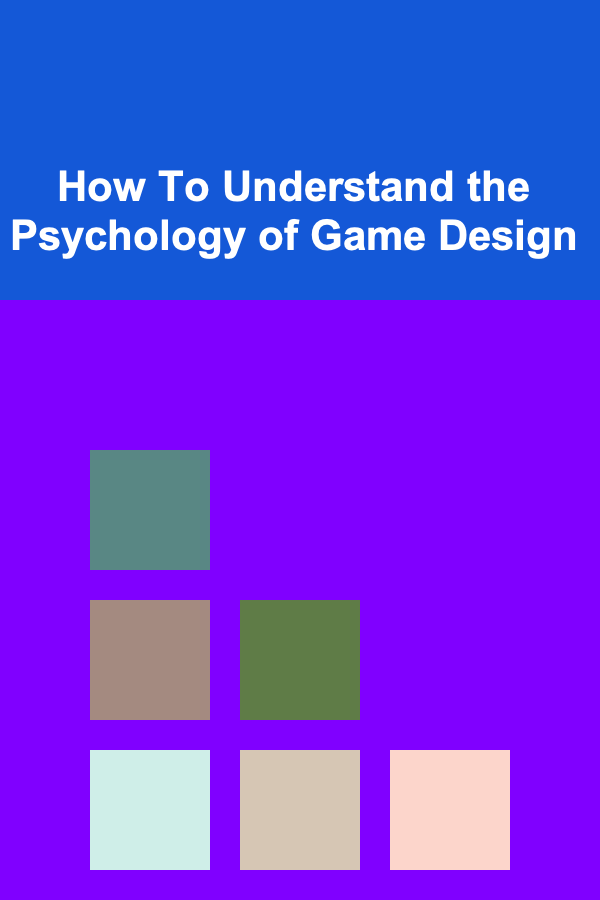
How to Understand Blockchain Governance
ebook include PDF & Audio bundle (Micro Guide)
$12.99$8.99
Limited Time Offer! Order within the next:

In the rapidly evolving world of blockchain technology, governance has become one of the most crucial aspects to understand. Blockchain governance refers to the systems, mechanisms, and processes that enable the decision-making and management of a blockchain network. It involves determining how the network operates, how changes to the protocol are made, how participants engage in the ecosystem, and how disputes are resolved. Understanding blockchain governance is essential for anyone looking to participate in or develop blockchain-based applications, as it directly influences the network's stability, scalability, security, and decentralization.
What is Blockchain Governance?
Blockchain governance is the process by which decisions regarding the protocol rules, operational mechanics, and upgrades of a blockchain network are made. It involves the stakeholders of a blockchain, including miners, validators, developers, token holders, and sometimes external actors. These decisions can involve technical changes, such as updates to the consensus algorithm or block size, as well as non-technical decisions, like community policies or dispute resolution frameworks.
The governance process is essential to the health and longevity of a blockchain because it determines how the system will evolve over time, how conflicts will be resolved, and who has the authority to make critical decisions.
Key Components of Blockchain Governance
Blockchain governance encompasses several key components:
1. Governance Models
Governance models are the frameworks through which decision-making occurs. These models vary widely across different blockchain projects, and the choice of governance model has significant implications on decentralization, security, and the ability to scale. The two primary governance models are:
a) On-chain Governance
On-chain governance involves decision-making that occurs directly on the blockchain itself, typically through voting mechanisms. On-chain governance allows stakeholders to propose changes, vote on proposals, and implement changes via smart contracts. This model is more decentralized since all participants can engage in the governance process, often proportional to their holdings or stake in the network.
Examples:
- Tezos: A popular blockchain with an on-chain governance model where token holders vote on protocol upgrades.
- Decred: A blockchain with a hybrid model, but it incorporates on-chain governance mechanisms for proposals and voting.
b) Off-chain Governance
Off-chain governance involves decision-making that occurs outside the blockchain network. In this model, decisions are typically made by a central body or group of trusted stakeholders, and they are then implemented on the blockchain through technical updates or software releases. While off-chain governance models are often quicker and more efficient, they may be criticized for being less decentralized.
Examples:
- Bitcoin: The decision-making process for Bitcoin largely takes place through off-chain mechanisms, such as developer consensus and community discussions. Updates to the Bitcoin protocol are implemented by developers, miners, and other influential stakeholders rather than directly by the community on-chain.
- Ethereum: While Ethereum includes some on-chain elements, much of its governance, especially for protocol upgrades (like Ethereum 2.0), occurs off-chain, with key decisions made by the Ethereum Foundation, developers, and community stakeholders.
2. Stakeholders
The governance of a blockchain is influenced by the stakeholders within the network. The main types of stakeholders include:
a) Miners and Validators
Miners (in proof-of-work blockchains) and validators (in proof-of-stake blockchains) are responsible for maintaining the integrity of the blockchain by verifying and validating transactions. They are also key players in governance, as they can influence protocol upgrades and vote on proposed changes. In some cases, they are given direct voting power proportional to their stake or computational power.
b) Developers
Blockchain developers play a critical role in governance, as they are responsible for writing and maintaining the code. Developers may propose improvements to the blockchain's protocol, and their work directly influences the direction of the network. However, developers' influence can be constrained by the governance model in place (on-chain vs. off-chain).
c) Token Holders
In many blockchain systems, token holders participate in governance by voting on proposed changes to the network. Token holders may have voting rights proportional to the number of tokens they own. The idea is that token holders are incentivized to act in the best interest of the blockchain since their holdings may appreciate or depreciate based on the network's success.
d) Users
End-users may not always have a direct influence on governance, but they still have an important role to play. Through their adoption of the blockchain, usage patterns, and feedback, they influence which features or improvements are prioritized by the development team or governance bodies.
3. Consensus Mechanisms
The consensus mechanism is one of the most fundamental aspects of a blockchain's operation and governance. It determines how the blockchain achieves agreement across decentralized nodes, who can participate in consensus, and how decisions are validated. Common consensus mechanisms include:
a) Proof of Work (PoW)
In PoW, miners compete to solve complex mathematical problems, and the first to solve the problem gets to add the next block to the blockchain. This mechanism is used in Bitcoin and many other cryptocurrencies. PoW is energy-intensive and can be slow, but it is highly secure.
b) Proof of Stake (PoS)
PoS replaces miners with validators, who are selected to add blocks based on the amount of cryptocurrency they have staked as collateral. The more a participant stakes, the greater their chance of being chosen to validate transactions and propose new blocks. PoS is seen as more energy-efficient than PoW and has been adopted by Ethereum 2.0.
c) Delegated Proof of Stake (DPoS)
DPoS is a variation of PoS where token holders elect delegates to make decisions on their behalf, including voting on protocol changes. This system can lead to faster decision-making and more centralized governance but also introduces the risk of centralization of power.
d) Proof of Authority (PoA)
PoA relies on a small number of trusted entities (authorities) who validate transactions and add new blocks to the blockchain. This mechanism is highly efficient and secure but sacrifices decentralization.
4. Voting Mechanisms
Voting is a central feature of many blockchain governance systems, particularly those with on-chain governance. Voting allows participants to express their preferences on proposed changes or upgrades to the blockchain. Voting can be conducted in various ways, including:
- Direct voting: Token holders vote on specific proposals.
- Delegated voting: Token holders delegate their voting power to a trusted representative or validator.
- Quadratic voting: A voting system where the cost of additional votes increases quadratically, intended to avoid dominance by large holders.
Voting mechanisms are essential for ensuring that governance remains decentralized and that decisions are made with broad participation. However, they also introduce the challenge of ensuring that voting power is fairly distributed and that the decision-making process is efficient.
5. Dispute Resolution
Disputes are inevitable in any decentralized network, and blockchain governance must have mechanisms in place to resolve conflicts. These disputes can arise over technical decisions, disagreements between stakeholders, or challenges to the network's overall direction. Common mechanisms for dispute resolution include:
- Mediation and Arbitration: Third parties or neutral parties may help mediate disputes between stakeholders, often in the form of community forums or independent arbitrators.
- Forking: In cases where there is a significant disagreement over the direction of the blockchain, a fork may occur, splitting the blockchain into two separate chains. Bitcoin Cash, for example, is a result of a hard fork from Bitcoin.
Challenges in Blockchain Governance
While blockchain governance offers numerous advantages, it is not without its challenges. Some of the key challenges include:
1. Centralization vs. Decentralization
Many blockchain projects struggle with maintaining a balance between centralization and decentralization. Decentralization is a core principle of blockchain technology, but it can make decision-making slow and inefficient. Conversely, centralized governance can streamline decision-making but risks undermining the very principle of decentralization that many blockchain projects aim to achieve.
2. Scalability of Governance
As blockchain networks grow and the number of participants increases, governance models must scale accordingly. Decision-making in large, decentralized networks can become cumbersome and difficult to manage. Finding a scalable governance model that can handle increased participation while remaining efficient is a key challenge.
3. Security
Governance systems must be secure to prevent manipulation or exploitation by malicious actors. In some blockchain systems, governance can be vulnerable to attacks such as Sybil attacks, where an attacker creates multiple fake identities to influence voting outcomes.
4. Community Involvement
Ensuring broad and meaningful community involvement in governance is often difficult. If only a small subset of users are actively engaged in the governance process, it can lead to decisions that do not reflect the interests of the wider community.
Conclusion
Blockchain governance is a multifaceted and critical component of blockchain technology. It determines how decentralized networks make decisions, how they evolve, and how they maintain security and stability. Whether through on-chain or off-chain governance, the mechanisms that enable decision-making and conflict resolution play a significant role in the blockchain ecosystem's long-term success. As blockchain technology continues to grow and mature, it will be essential to refine governance models to ensure that they are secure, scalable, and representative of the diverse community of participants involved. Understanding blockchain governance is therefore an essential step for anyone looking to engage with blockchain-based systems, whether as a developer, investor, or user.

How to Create a Portfolio for Translation Work and Attract Clients
Read More
How to Make Money Online as a Veterinarian: 10 Actionable Ideas
Read More
How to Understand Blockchain for AI Integration
Read More
How To Understand the Psychology of Game Design
Read More
How To Explore the Connection Between Gut Health and Overall Wellness
Read More
Selecting the Best Blind Cleaner for Venetian Blinds: A Comprehensive Guide
Read MoreOther Products

How to Create a Portfolio for Translation Work and Attract Clients
Read More
How to Make Money Online as a Veterinarian: 10 Actionable Ideas
Read More
How to Understand Blockchain for AI Integration
Read More
How To Understand the Psychology of Game Design
Read More
How To Explore the Connection Between Gut Health and Overall Wellness
Read More